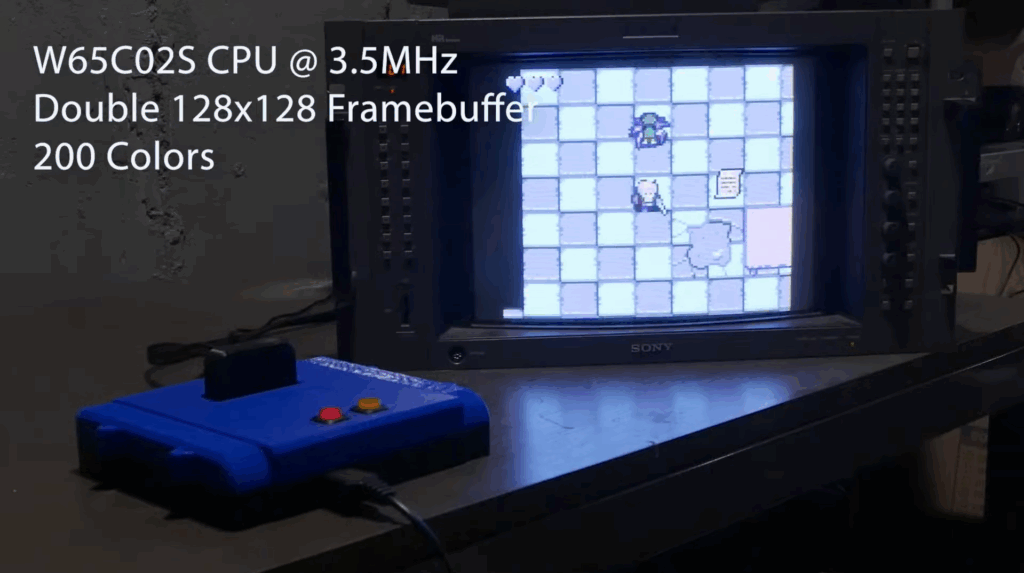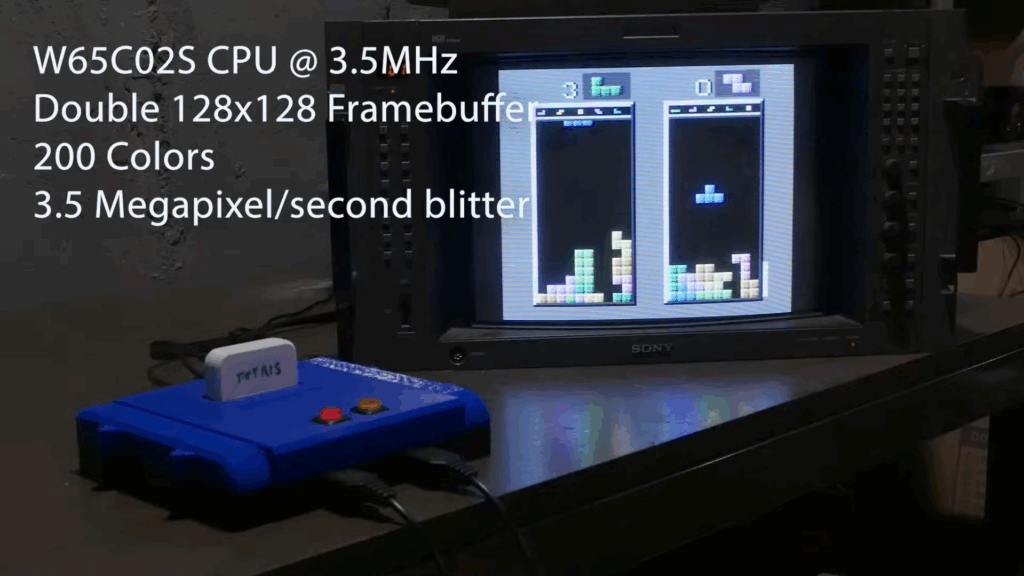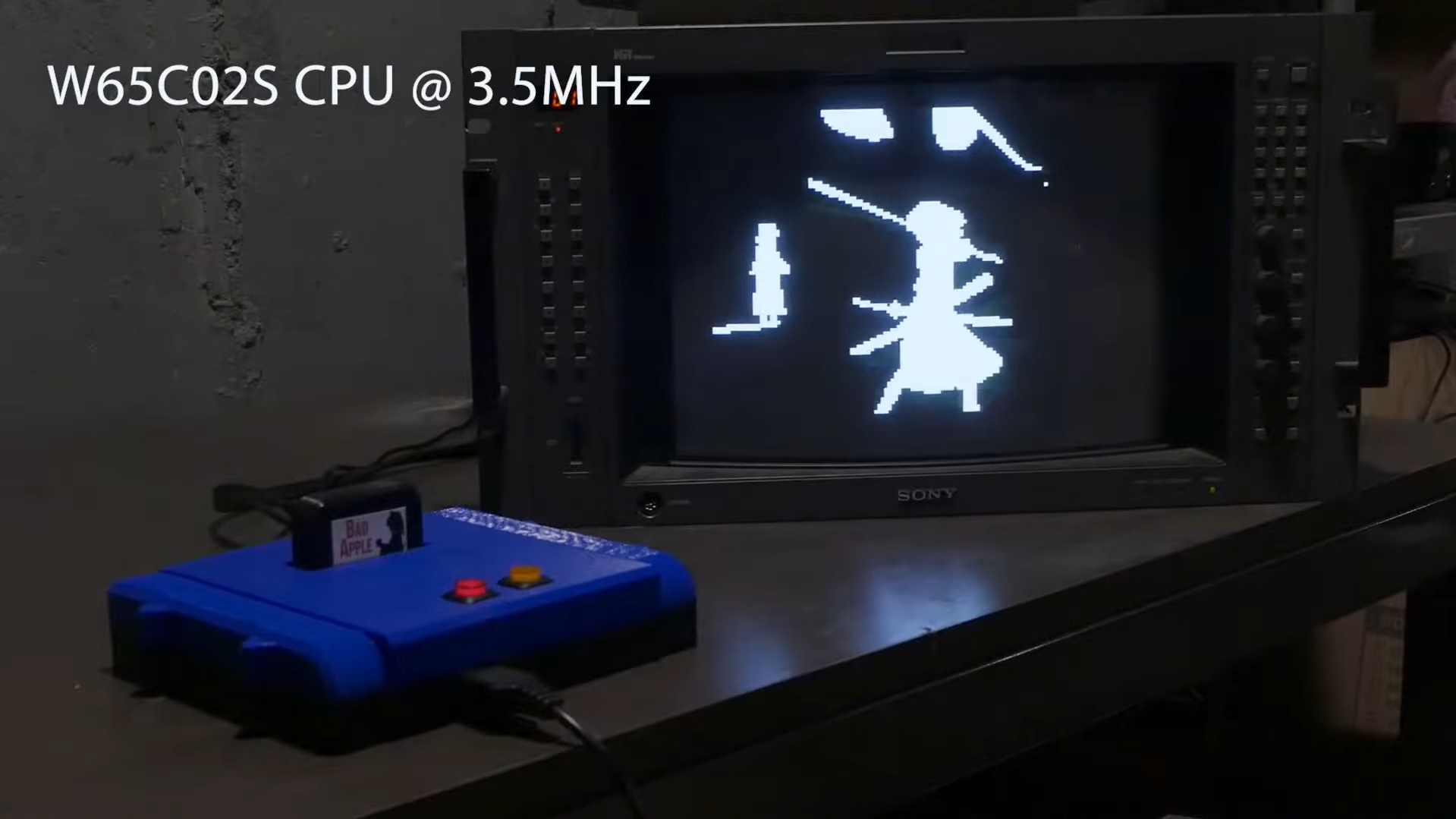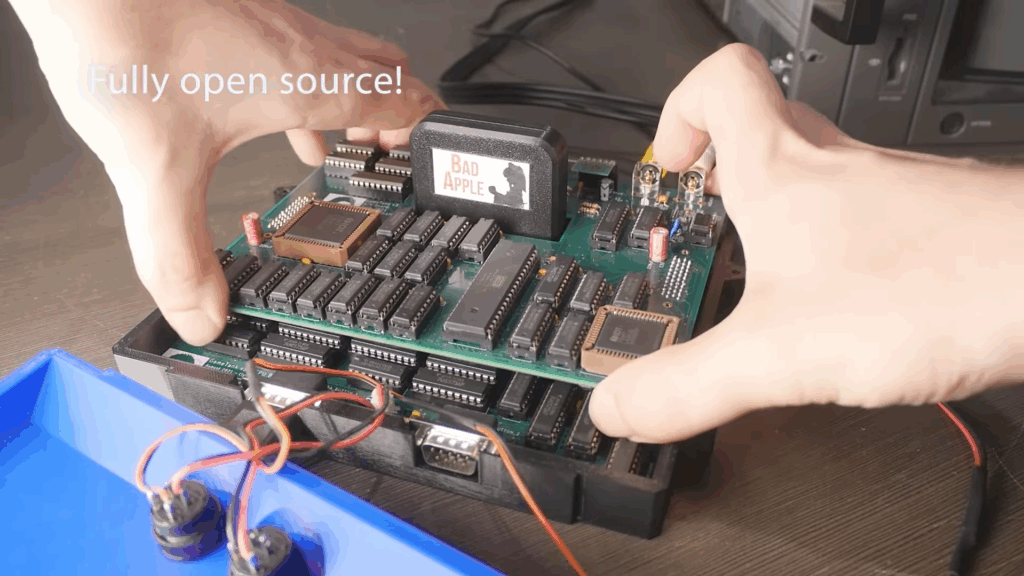
The GameTank is a unique, modern gaming platform designed to offer a retro-style 8-bit experience, but built with a radically different and more powerful architecture than the classic consoles it seeks to evoke. Rather than relying on custom Application-Specific Integrated Circuits (ASICs) like its 1980s counterparts, the GameTank is an entirely open-source hardware and software project, using modern, off-the-shelf components to deliver its experience (as detailed on gametank.zone).
It represents a philosophical departure from the classic 8-bit era while staying true to the spirit of simple, dedicated hardware.





Dual-Core Processing Power
The GameTank’s processing heart is a dual-CPU system, a feature virtually unheard of in third-generation 8-bit consoles. It utilizes two WDC W65C02S microprocessors, a modern, low-power version of the legendary 6502 chip found in systems like the Apple II and the NES.
- Main CPU: A W65C02S clocked at 3.5 MHz handles game logic, input, and managing graphics. This clock speed is approximately double that of the Nintendo Entertainment System’s (NES) Ricoh 2A03 CPU (1.79 MHz}) and only slightly slower than the SEGA Master System’s (SMS) Zilog Z80A (3.58 MHz).
- Audio Coprocessor: A second W65C02S, clocked at 14 MHz, is dedicated solely to sound generation, controlling an 8-bit Digital-to-Analog Converter (DAC). This setup dramatically offloads the main CPU, allowing for complex, high-quality synthesized sound or Pulse-Code Modulation (PCM) audio that is far beyond the capability of the single-chip audio generators in most classic 8-bit consoles.
Graphics: Framebuffer vs. Tile Mapping
The most significant technical distinction between the GameTank and its historical peers is its graphics system. While the NES and Master System are tile and sprite-based, meaning all visuals are built from small, reusable graphics chunks mapped to the screen, the GameTank utilizes a framebuffer-based architecture.
| Graphics System | Classic 8-Bit (NES/SMS) | GameTank |
| Method | Tile/Sprite Mapping | Framebuffer with Hardware Blitter |
| Color Control | Highly constrained (e.g., 4 colors per 8×8 tile on NES) | 200 colors available per pixel |
| Animation | Slow tile swapping or CPU-intensive updates | Fast, smooth drawing via the Blitter |
| Graphical Limitations | Sprite flicker due to scanline limits | Low native resolution (128×128) |
The GameTank features a Double 128 x 128 Framebuffer (where one buffer is drawn while the other is displayed to prevent screen tearing). This memory is fed by a massive 512 KB of dedicated Graphics RAM (or “Sprite RAM”), which stores asset data.
The system’s true power lies in its 3.5 Megapixel/second blitter (a hardware-accelerated byte copy mechanism). This blitter copies arbitrary blocks of data from the Sprite RAM directly into the framebuffers asynchronously (running in parallel to the CPU).
- Compared to NES/SMS: The NES and Master System relied entirely on the CPU to manage sprites and backgrounds by updating pointers and tile indexes. This led to limitations like the NES’s infamous “sprite flicker” when too many objects crossed a scanline. The GameTank’s blitter handles all large drawing operations in hardware, allowing for far smoother and more complex visual effects and animations than the 1980’s systems could manage, despite its lower native resolution.
Hardware Specifications Summary
The GameTank’s modern specifications often exceed the hardware of the classic 8-bit consoles, providing developers with generous resources by the standards of the era it emulates.
| Specification | GameTank | NES | SEGA Master System |
| Main CPU | W65C02S @ 3.5 MHz | Ricoh 2A03 @ 1.79 MHz | Zilog Z80A @ 3.58 MHz |
| System RAM (WRAM) | 32 KB | 2 KB | 8 KB |
| Graphics RAM | 512 KB (Dedicated Sprite RAM) | 2 KB (PPU RAM) | 16 KB (VRAM) |
| Resolution | 128 x 128 (Visible) | 256 x 240 | 256 x 192 |
| Colors On-Screen | 200 (Fixed Palette) | 25 (from 52) | 32 (from 64) |
| Sound System | Dedicated W65C02S Coprocessor | 5-Channel APU (Built into CPU) | 4-Channel PSG |
| Key Differentiator | Hardware Blitter, Dual CPU, Open Source | Mapper chips for expansion | Larger colour palette (vs. NES) |
A cool thing to add is that if you’re not wanting to build the GameTank for yourself, then a Crowd Supply campaign is planned. So this may be a good way to get your hands on one in the future.
[Credit GameTank and Robby]

3 things come to mind:
1. This is quite a cool project and it’s very nice that it’s open-source! From seen what it could do in the video it seems like a cool system!
2. But if someone makes a core for this than anyone with a MiSTer and so on can enjoy this platform without the need for the hardware.
3. Why is there only now a CrowdSupply campaign being started? The linked video is 3 years old and I also see a video by (the immortal 🙂 ) John Hancock from a year ago.
I’ve seen a few other games for this and Red’s Run and Ganymede looks cool to play!